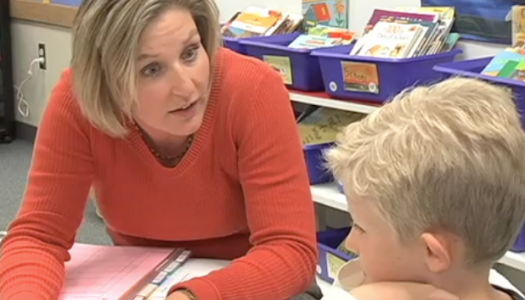Take Me to a Place
Join Our Community
Access this resource now. Get up to three resources every month for free.
Choose from thousands of articles, lessons, guides, videos, and printables.
When students are reading accurately and fluently, we shift our conferring focus to comprehension and think about how we can use the time most effectively.
You may wonder what the conference will be like when first making the shift from listening to students read for accuracy and fluency to chatting with them about their reading. Many things went through our minds when we began this conferring focus. If we weren't listening to students read, what were we doing instead? How could we know for sure they were understanding? How could we assess their comprehension if we hadn't read the book ourselves? How might we most efficiently monitor progress and move on to our next conference? After much trial and error, we fell upon a strategy that has continually worked for us. We call it Take me to a place.

Our students know that when we join them for a conference, we expect them to continue reading until we engage them in a conversation. We take these first few seconds to review the student's goals, our former conferring notes, and to observe them reading. We begin by sharing an observation or referring to our notes and asking what is happening for them as readers. Here are some examples:
"I noticed you were laughing. Why were you laughing?"
"I noticed you were flipping pages. What was bringing you back to the text?"
"You have been paying attention to text features in nonfiction. How has that been going?"
Once the student responds to our initial question, we follow up with:
"Take me to a place . . .
- where you laughed because the book is funny."
- where you were confused by the dialogue so you went back to make sure you understood who was speaking."
- where the text features helped you understand something new."
Take me to a place sends the reader back into the text to find evidence to support her thinking. We can determine if she has chosen evidence that firmly supports her ideas, and probe further to clarify why she is thinking a particular way. We can also follow up on her notebook entries to assess if she is documenting her thinking and recording text evidence. Even if we are not familiar with the book, this process gives us a window into the reader's thinking so we can assess her comprehension and note-taking. If we are not convinced the reader is comprehending the text, we may share this concern with her and let her know that we are going to take some time to read the text so we can better support her, or we may use a short text to further teach and allow her to transfer the instruction back to the text she is reading independently.
When we ask readers to take me to a place, we are shifting the responsibility to them. It is up to them to show us and metacognitively explain their thinking to us. This gives us an opportunity to informally assess the student's comprehension, progression toward goals, and use of the reader's notebook to document thinking. This technique also pushes us to remember that the goal of a conference is to assess and teach, providing just-in-time instruction so each and every student can reach their goals.






